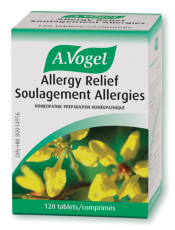How common are allergies?
Allergies to cats and dogs affect approximately 10-20% of the global population ranging from mild symptoms to severe anaphylaxis.
In Canada, the statistics are difficult to come by, but our southern neighbor has a wide range of information to draw upon. According to the National Institutes of Health, over 90% of US homes have detectable levels of animal allergens, and considering the amount of time that is now spent indoors, this poses a real risk for those with severe pet allergies.
How do allergies happen?
To understand this question, we need to discuss a little about the immune system. The human body is at war with pathogens trying to invade every second. More often than not, we win these battles. When we don’t, we start to show signs of an illness as they gain a foothold in some part of the body.
Our white blood cells are like the warriors of our bodies, but as any war goes, meeting an unknown enemy on the battle field can leave the cells feeling unprepared. The defense they mount is often sluggish and unspecific because they have yet to battle this enemy. The individual is going to lose some fighters, and the pathogen will hopefully lose a lot of fighters. When the bacteria, virus, or parasite dies, the human body collects some remnant of the enemy. Similar to how armor was collected from a fallen enemy during the Greco-Roman era.
After taking the part of the enemy, the body has its resident scientists analyze the piece known as an antigen so it can better understand how this pathogen functions and better prepare itself for the next invasion.
Sometimes though, the body mistakenly identifies harmless things such as pet dander as the villain of the story. After the initial exposure, it starts to treat the cat or dog dander as a threat and mounts an attack which is experienced as allergies.
What are some signs and symptoms of allergies?
Many people start to feel their eyes begin to itch and their sinuses get stuffy and clogged. They often feel a tickle in their throat and could begin to develop a rash.
While these may be irritating and impact daily living, they do provide benefit. For example, getting a stuffy nose is the body increasing mucous production to form a barrier against other bugs.
The thick mucous traps them and prevents them from getting any further into the body than the nasal passages. While this may lead to the sometimes lasting and painful congestion often experienced with allergies, thank goodness for the bodies reaction.
Is it possible to have allergies to one type of animal and not another?
Absolutely! While the similarities between cats and dogs are numerous, the differences are there as well, down to the molecular level.
Humans respond to one main protein known as Fel d 1 for feline allergies, while there are often a variety of dog proteins. The body is very adept at differentiating between pathogens because it needs to respond in specific ways to each one. For example, it will not respond to the influenza virus the same way it responds to the Norwalk virus, the common ‘cruise ship’ illness that leaves the ships bathrooms less than pristine.
What about a hypoallergenic pet?
There is no such thing as a 100% allergen free pet. Hypoallergenic pets are simply those that experience minimal shedding making it less likely to release allergens into the atmosphere. Allergens tend to stick where they land, so keeping a clean home is key if you’re looking to minimize your symptoms and exposure.
The joys of bath day can contribute to a reduction of symptoms.
While the focus is on cats, research has shown that bathing a dog twice a week can lead to a 61% reduction in allergy symptoms 5-7 days after washing. Stay mindful that this could strip the natural oils from your furry friend’s fur and make their skin and coat more flaky and dry over time.
That advice sounds great, but is it possible to achieve some symptomatic relief in the mean time?
Allergy relief is a 6X homeopathic preparation that is completely safe for pregnant or breastfeeding women.
In one study, those taking the Allergy Relief tincture reported an 88.5% improvement in their symptoms. A beneficial use for the product line prophylactically during times of heavy shedding. For instance, once the cold grip of winter begins to thaw, animals switch their wardrobe over to their spring wear. This involves a heavy amount of shedding, so by taking allergy relief about a month out from Spring, you may be preventing more aggressive irritation.
What about those HEPA filters everyone gets excited about?
HEPA filters, short for high efficiency particulate air filters, can benefit those experiencing pet allergies.
In one study on dog allergens, HEPA filters reduced the amount of Can f 1, a common canine allergen, in the room by 75%. The openings in the filter are incredibly tiny and can actually cause particles to become stuck. As more particulates build up in the filter, there is a higher chance that others will stick to them. Combined with other forms of cleaning and short from getting rid of the family pet altogether, individuals can keep their allergies minimized.
References
http://www.aafa.org/pet-dog-cat-allergies/
https://www.ncbi.nlm.nih.gov/pmc/articles/PMC5809771/
https://www.ncbi.nlm.nih.gov/pubmed/10200004
https://www.ncbi.nlm.nih.gov/pubmed/10380780
https://www.ncbi.nlm.nih.gov/pubmed/28540285
https://www.ncbi.nlm.nih.gov/pubmed/29310769
https://www.ncbi.nlm.nih.gov/pubmed/29411550
https://www.ncbi.nlm.nih.gov/pubmed/29708676
https://www.nih.gov/news-events/news-releases/allergens-widespread-largest-study-us-homes





